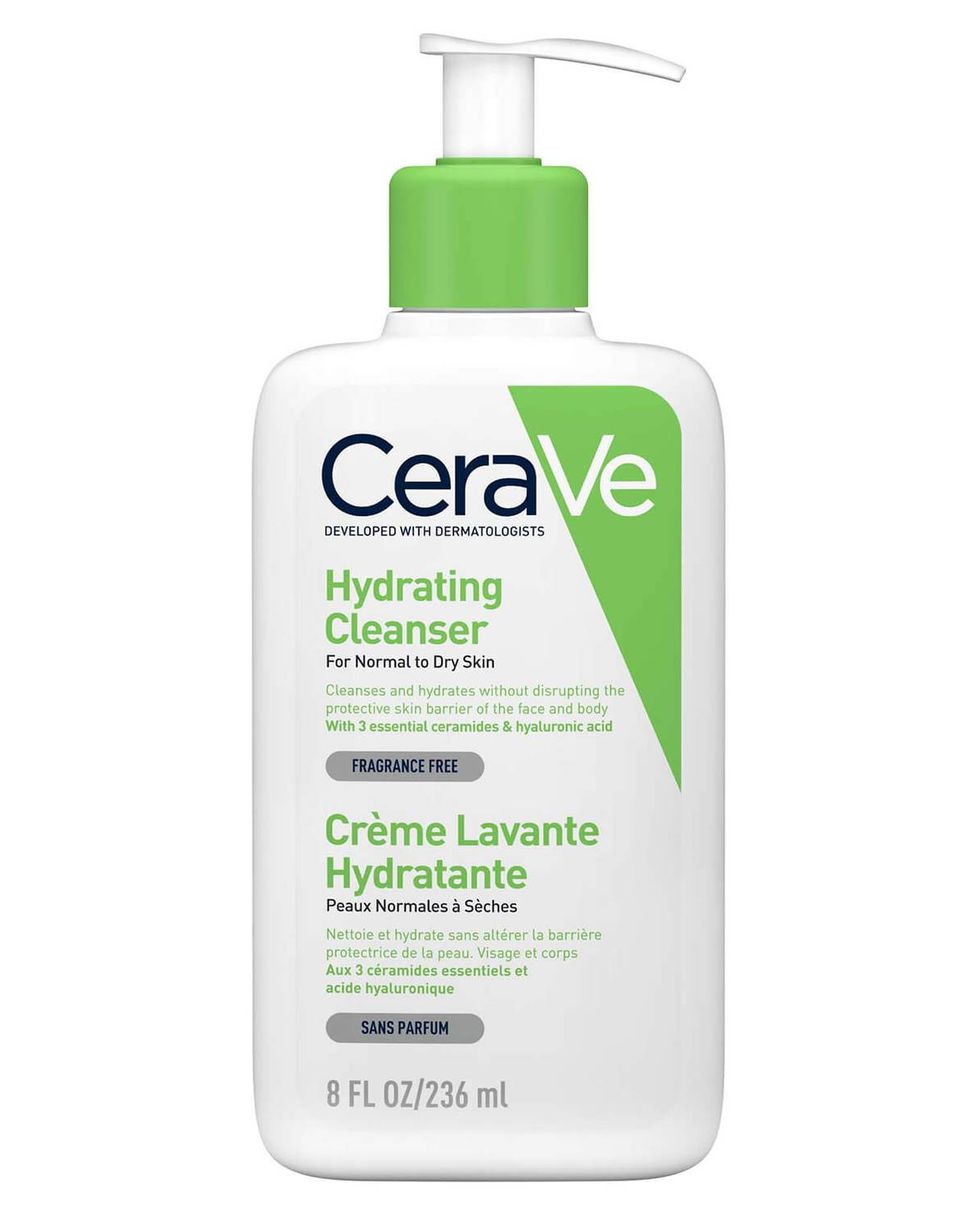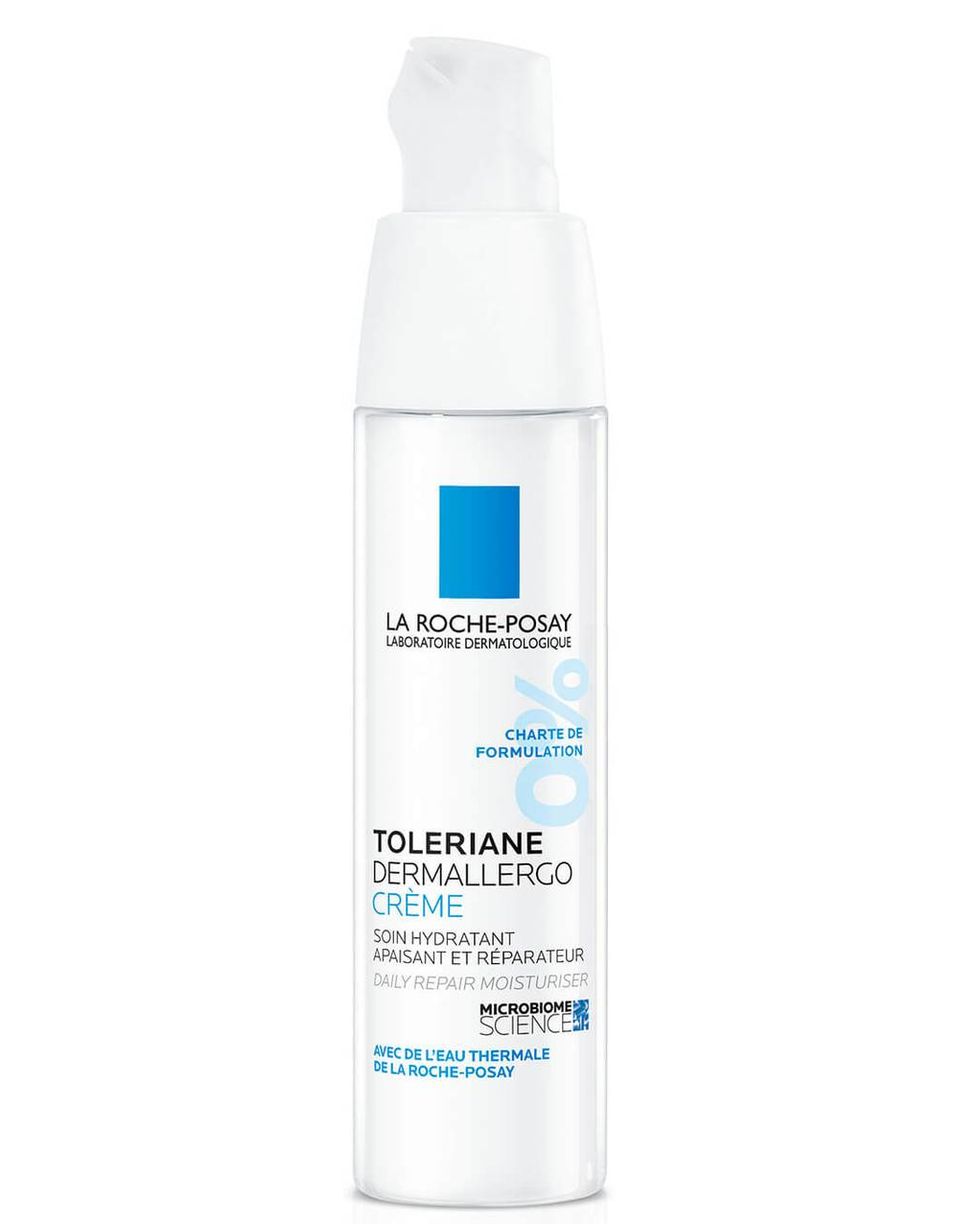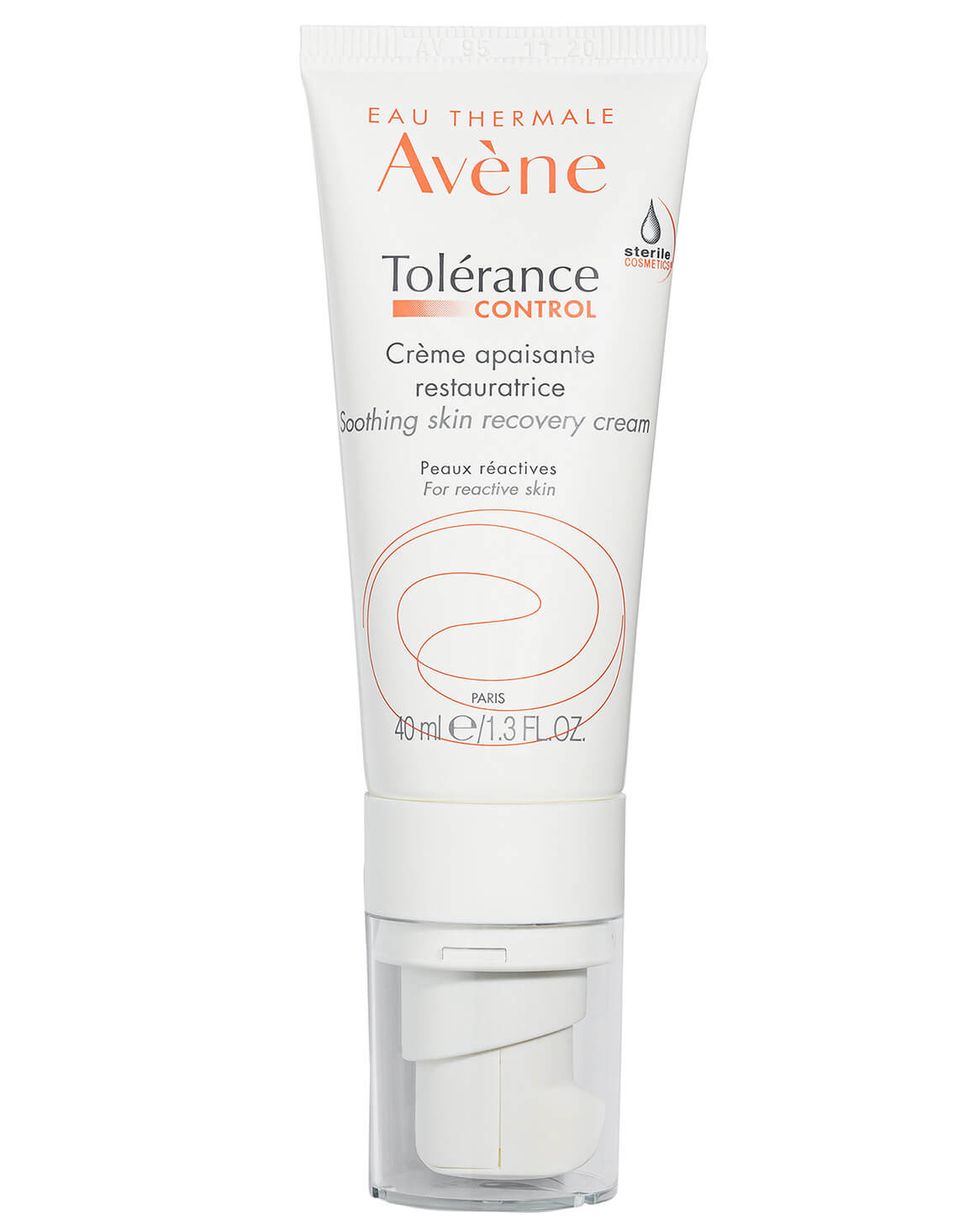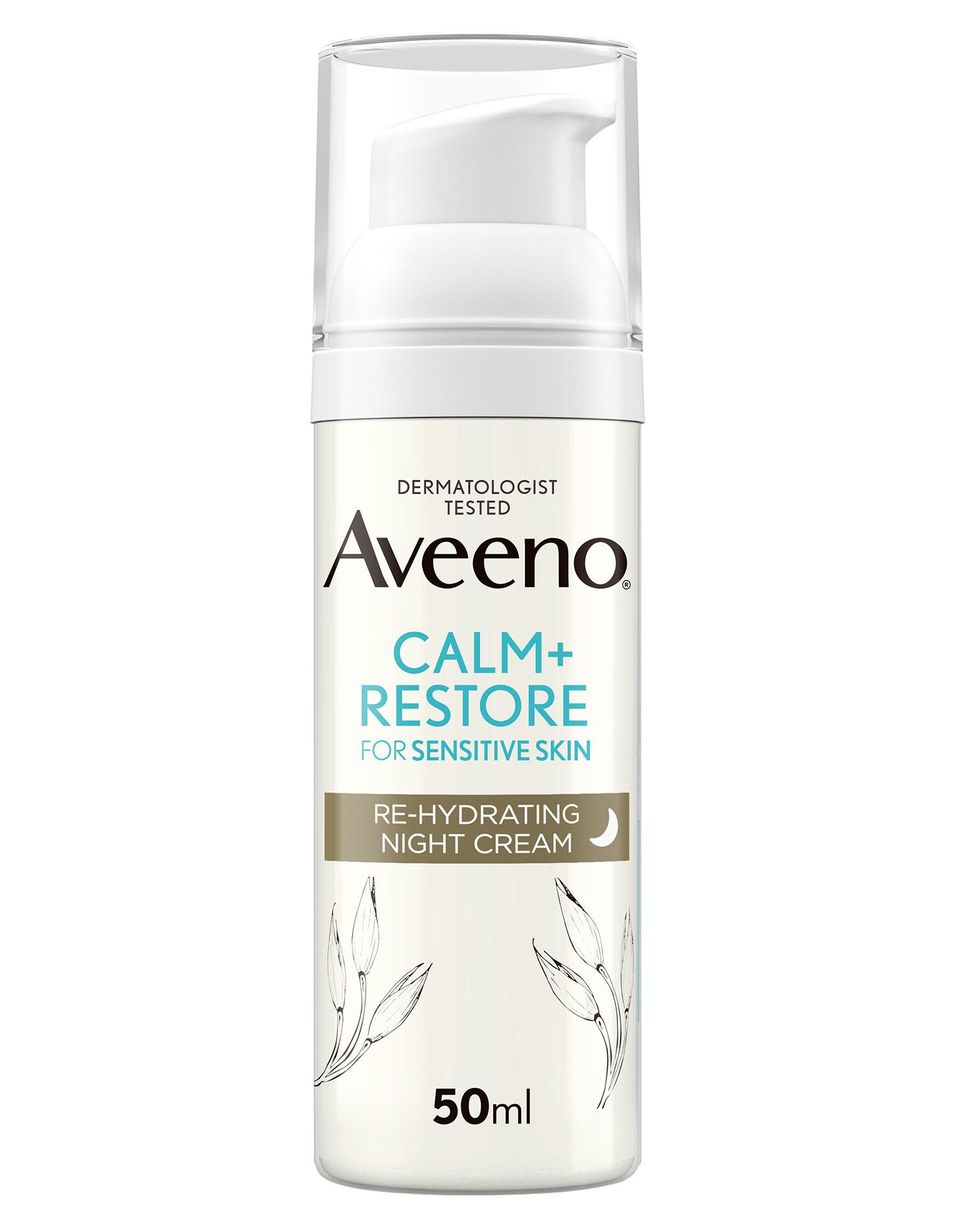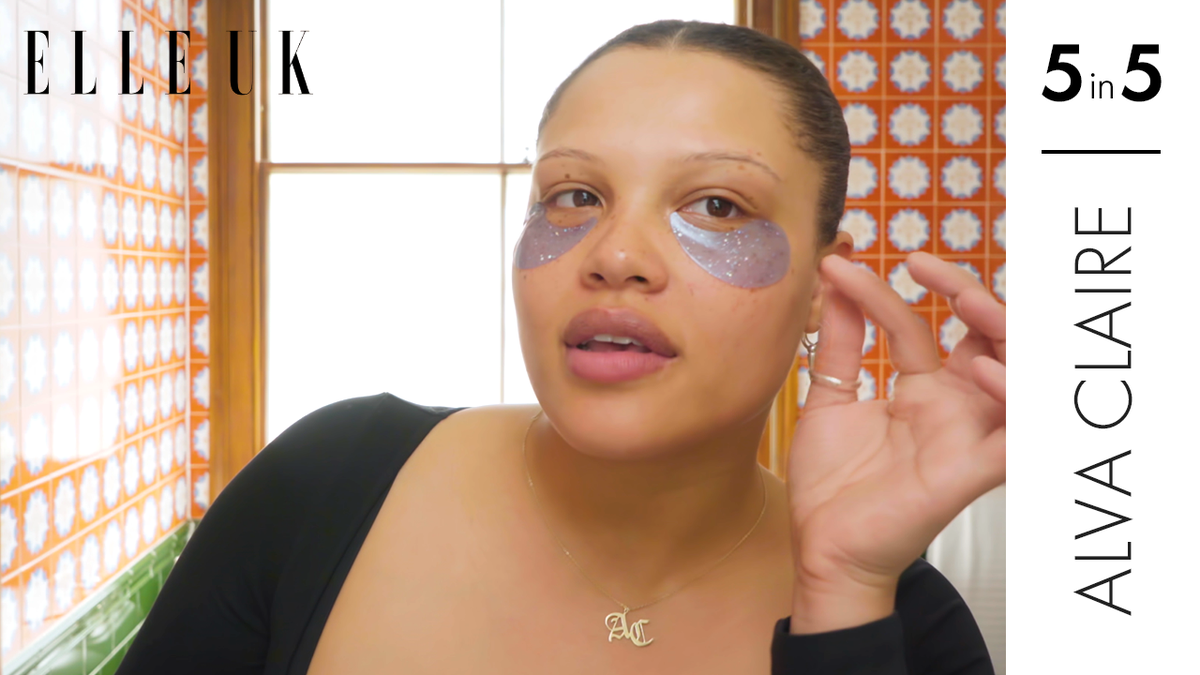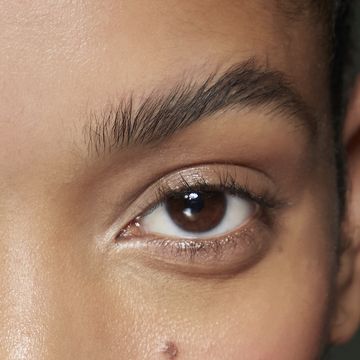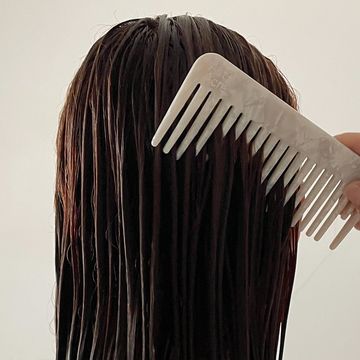Noticed a red rash around your mouth or nose? It could be something called perioral dermatitis. 'A very common skin condition, perioral dermatitis mainly affects young women (90% of cases), but can occur in both genders and in children, too,' says Dr Alexis Granite, CeraVe consultant dermatologist.
Despite experts reporting a recent rise in cases, the skin condition remains shrouded with mystery. It wasn't until Hailey Bieber first shared her experience on Instagram in 2020 that perioral dermatitis became more commonly known. The model took to TikTok this week to share an update on her journey, citing a combination of prescription azelaic acid and clindamycin, as well as her Rhode Peptide Glazing Milk, for balancing her skin during a flare-up.
While it has a persistent and recurring nature, dermatologists assure us that there are several steps you can take to help heal perioral dermatitis.
What Is Perioral Dermatitis?
'Perioral dermatitis is a rash characterised by red bumps and dry, flaky patches around the mouth,' says Granite. Dr Maryam Zamani, aesthetic doctor and founder of MZ Skin adds that it can also 'consist of small inflammatory papules and/or pustules.'
Although perioral means ‘around the mouth’, 'a similar rash may also occur around the eyes and nose, too,' says Zamani. Hence why this condition is also referred to as periorificial, meaning ‘around an opening’, dermatitis. As for symptoms, 'the affected area may itch and burn, or there may be no sensation at all,' says Granite.
Interestingly, both experts have seen a recent uptick in perioral dermatitis cases – something that Zamani puts down to the pandemic and mask wearing. 'Mask wearing can exacerbate perioral dermatitis by creating a warm and damp environment that changes the microflora – resulting in inflammation in the area.' Granite believes the increase is 'likely due to the rise of multi-step skincare routines and product exposure.'
What Causes Perioral Dermatitis?
'The exact cause of perioral dermatitis is unknown,' says Zamani. However, several factors are believed to be at play here. 'It has been associated with long term topical corticosteroids use as well as inhaled steroid use,' says Granite.
'Certain cosmetic products, such as heavy moisturisers, fragranced products and physical sunscreens have been linked to perioral dermatitis,' says Zamani, who adds that fluorinated toothpaste and dental fillings are known triggers.
'In many cases, there may not be an identifiable trigger - so it is likely hormones and stress also play a role,' adds Granite.
Is Periorial Dermatitis Linked To Your Gut?
While reports suggest that perioral dermatitis and gastrointestinal health are inextricably linked, it's important to note that the condition has a whole range of causes.
'The cause of perioral dermatitis is not always clear, it may be hormonal, due to products such as skincare or toothpaste, or due to prolonged use of steroid creams and inhalers. I generally recommend those with perioral dermatitis essentially do an "elimination diet" for their skin, stripping back skincare to just a bland cleanser, moisturiser and mineral sunscreen. Then once the dermatitis has cleared, they can add one product back in per 1-2 weeks and assess if the dermatitis recurs.'
What Treatment Is Best For Perioral Dermatitis?
For some, perioral dermatitis may resolve completely after treatment (or once the trigger has been removed). While for others, it can be a chronic condition that re-appears. In both cases, there are several steps and treatment options that can help keep perioral dermatitis at bay.
'It's important to also stop any topical steroids if you have been using them. Discontinuing topical steroids may result in a transient flare of perioral dermatitis before it begins to improve. Red LED which reduces inflammation can also help' says Granite.
'It's best to simplify your routine when suffering with perioral dermatitis. Avoid heavy oils, serums and emollients, and use a light oil free moisturiser instead. Lay off of potentially irritation actives such as retinol and vitamin C. Even products you have been using for a long period time can all of a sudden trigger perioral dermatitis.'
How Long Does It Take To Heal Perioral Dermatitis?
'Sometimes perioral dermatitis can settle quickly,' says Dr Justine Hextall. 'If topical steroids have been the trigger, once they are stopped the skin can flare quite significantly and this can take time to settle. The sooner steroids are finally stopped and skin care stripped back the quicker the skin will start to improve. That initial rebound flare can be difficult to tolerate, throw your steroid cream away so there’s no temptation to go back!'
1. Identify Your Triggers
Although perioral dermatitis can be hormonal, there are still triggers that can contribute to a flare-up or make the facial rash worse. To help ease symptoms, try to identify and steer clear of those triggers. 'Stop all topical steroid use,' says Granite, 'at first, this may cause the rash to worsen but it will eventually settle.'
'Remove fragranced products from your routine, avoid fluorinated toothpaste, avoid the sun and do not use aggressive skincare,' adds Zamani. Spicy foods can also exacerbate or cause dermatitis, so Granite recommends avoiding these.
Be sure to check your products ingredient list to ensure that they’re free from fragrance as well as 'petrolatum, paraffin, mineral oil and isopropyl myristate - as these are all potential causes of perioral dermatitis,' states Granite.
2. Go Back To Basics
'The first step is to simplify the skin care regime. Stripping everything back is vital,' explains Hextall. 'I try to encourage skin care that has a few ingredients as possible especially perfumes and preservatives. Find the most gentle cleanser that when rinsed, leaves the skin calm and hydrated. I then like a very light non-comedogenic hydrating serum such as the Cicaplast B5 Face Serum and a light-water based moisturiser like La Roche Posay Toleriane Sensitive Fluid Moisturiser.'
'Remove all potential irritants such as retinol, vitamin C and AHAs/BHAs, and stop using heavy emollients and oils,' adds Granite.
As someone whose perioral dermatitis was triggered by overdoing it on the skincare front, I definitely saw some improvement after going back to basics. 'I do recommend stripping back skincare while the rash is active. Then once cleared you can add back in one product at a time to all the skin to adjust and make sure products are not exacerbating the rash.'
'Use a gentle fragrance-free cleanser twice daily and a light oil-free moisturiser, Finish with a non-comedogenic, mineral based SPF. 'Red LED can also help settle some of the inflammation associated with perioral dermatitis.'
3. Consult A Dermatologist
How do you professionally treat dermatitis? The answer is exactly what you'd expect.
'Consult a dermatologist if your perioral dermatitis persists for several weeks despite simplifying your skincare routine,' advises Granite. While my rash improved slightly, it continued to stick around for three months before I finally made an appointment to see a dermatologist – after which, thanks to prescribed antibiotics, it cleared up in a matter of weeks.
'Perioral dermatitis may be treated with topical medications such as topical antimicrobials and anti-inflammatories, as well as oral antibiotics if needed,' adds Granite.
4. Topical And Oral Antibiotics
According to Zamani, first line treatments for perioral dermatitis often include one of the below options:
- 'Topical antibiotics (in the form of creams, gels or lotions) are helpful for their anti-inflammatory properties and can include metronidazole, clindamycin, and erythromycin.'
- 'Topical sulphur preparations and azelaic acid gel.' Several studies have found that azelaic acid is effective in treating inflammation.
- 'Topical calcineurin inhibitors like tacrolimus ointment or pimecrolimus cream can be effective.' A calcineurin inhibitor works with the immune system to block the chemicals that can contribute to a perioral dermatitis flare-up.
'If topical therapies do not resolve perioral dermatitis, oral antibiotics can be added daily for an extended period of time,' says Zamani. Patience is key, however, as topical therapies may not show peak efficacy for three months of daily use. 'Oral antibiotics can be used for three months or longer if the symptoms are not controlled with topical therapies,' adds Zamani.


